FireEater
Guest
I was just referred to this article today. After reading it, I removed the carbon from my system.
It came out in 2011. CLICK HERE
Though I have ran carbon since 2002 with tangs and never have seen HLLE until about a year ago when my Yellow Tang developed it. My FoxFace looks to have a mild case of it also. My Purple and Cole Tangs do not have it.
I get the carbon by the bucket load for free. They buy it in very large bulk bags. Only two would fit in the back of a pickup truck, that is how large they are. HumbleFish talks about cheap carbon and I'm sure this is cheap carbon.
Though carbon is carbon, right? It all comes from the same source basically? It is just prepared, so to speak, differently? Not really, as carbon is used for a wide variety of uses.
We use GAC (Granular Activated Carbon) in our systems as it is commonly used for water treatment.
There are however several different classifications of carbon for different uses.
Activated Carbon
The article from Coral talks about rinsing carbon real good before using it, if one still wants to run it. That would take a lot of RO/DI water to do, depending on the amount of carbon one runs.
If you use tap water to rinse it, I've always wondered how saturated it gets with this process. It is carbon after all, so as you rinse it, it is removing all the impurities from the tap water. So if you have to rinse it for a good amount of time to see clear water running through it, it will be saturated to a point afterwards.
Carbon adsorbs a wide range of impurities and contaminants, including chlorine, odors, and pigments. Other substances, like sodium, fluoride, and nitrates, are not as attracted to the carbon and are not filtered out. Because adsorption works by chemically binding the impurities to the carbon, the active sites in the charcoal eventually become filled. Activated charcoal filters become less effective with use and have to be recharged or replaced.
I thought it was a poor diet which caused the HLLE and have been feeding more algae sheets to them. Though the two do not seem to be getting better. The Yellow Tang does eat like a pig and seems in good health otherwise.
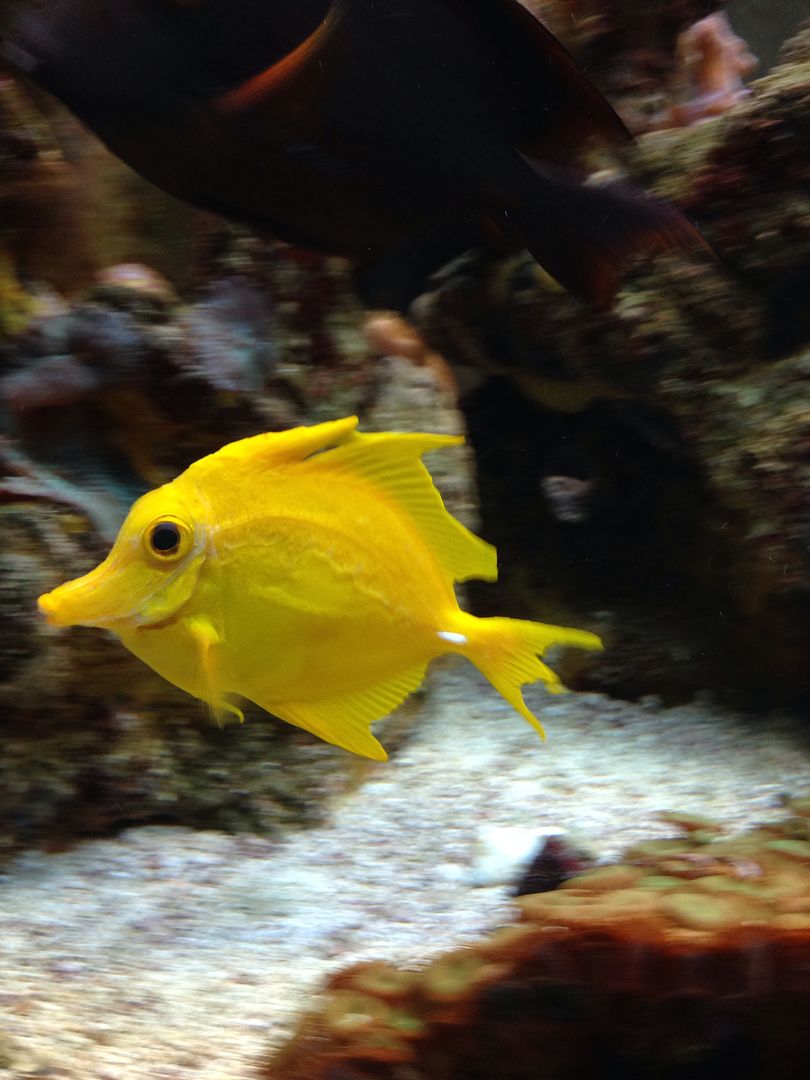
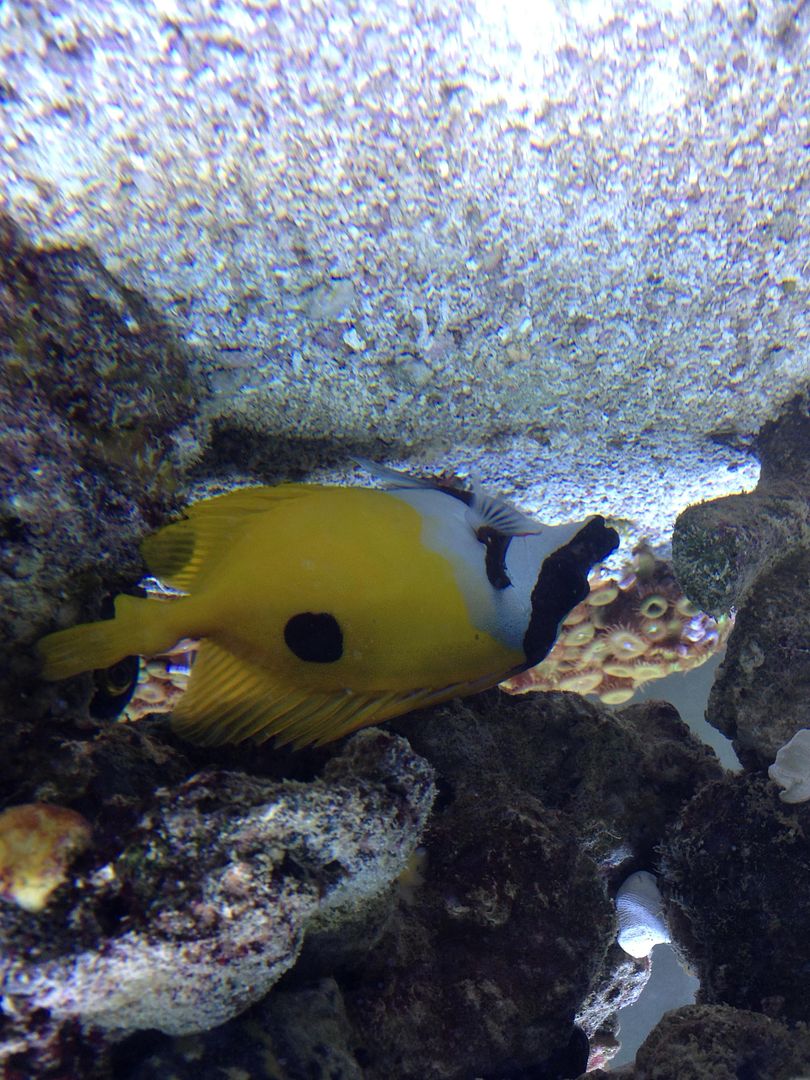
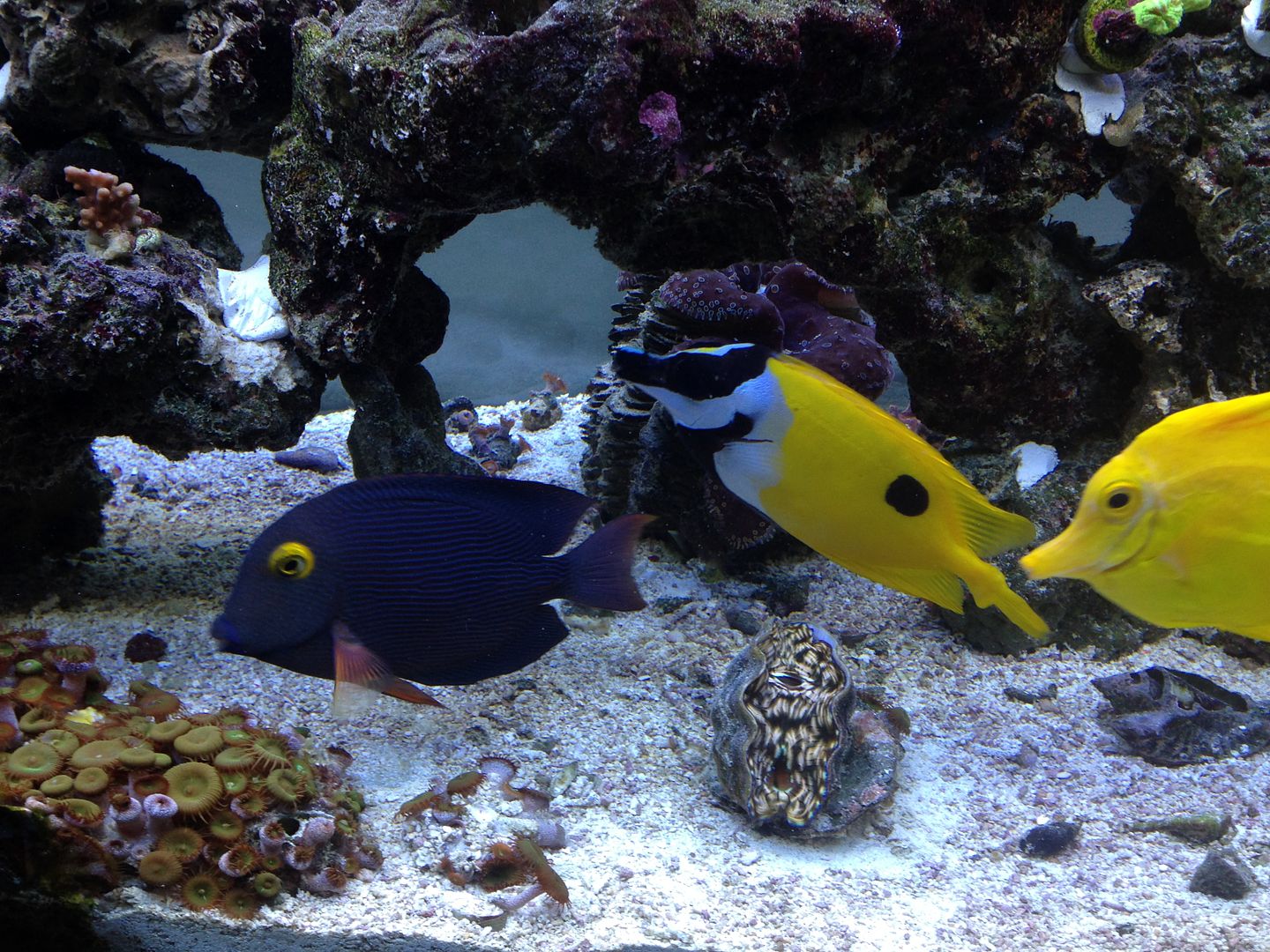
My system consists of a 125g main tank, 29g Zoa tank next to it, 45g Sump, and a 65g barrel in the garage and it is all plumbed into the Sump. So essentially it is one system.
65g barrel in garage with chiller. I do all water changes here by shutting it off from system, draining it with water hose, then refilling it with salt water mix from the 65g RO/DI barrel.

RO/DI barrel
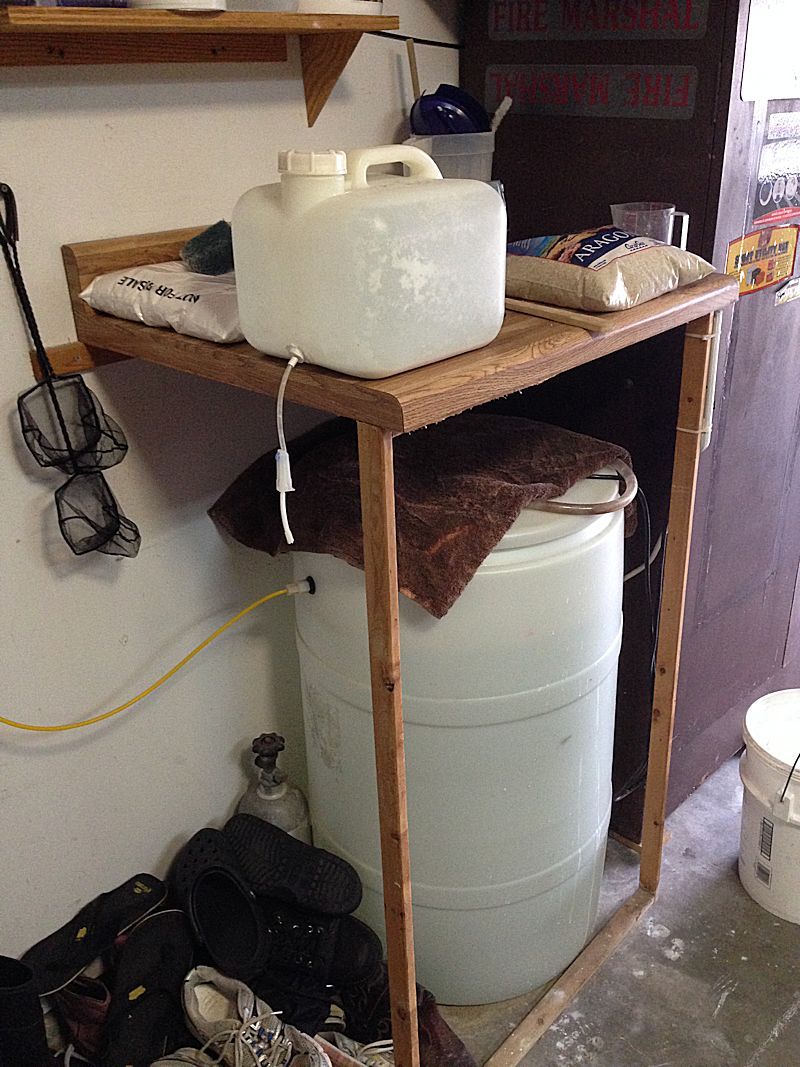
I run a Calcium Reactor.
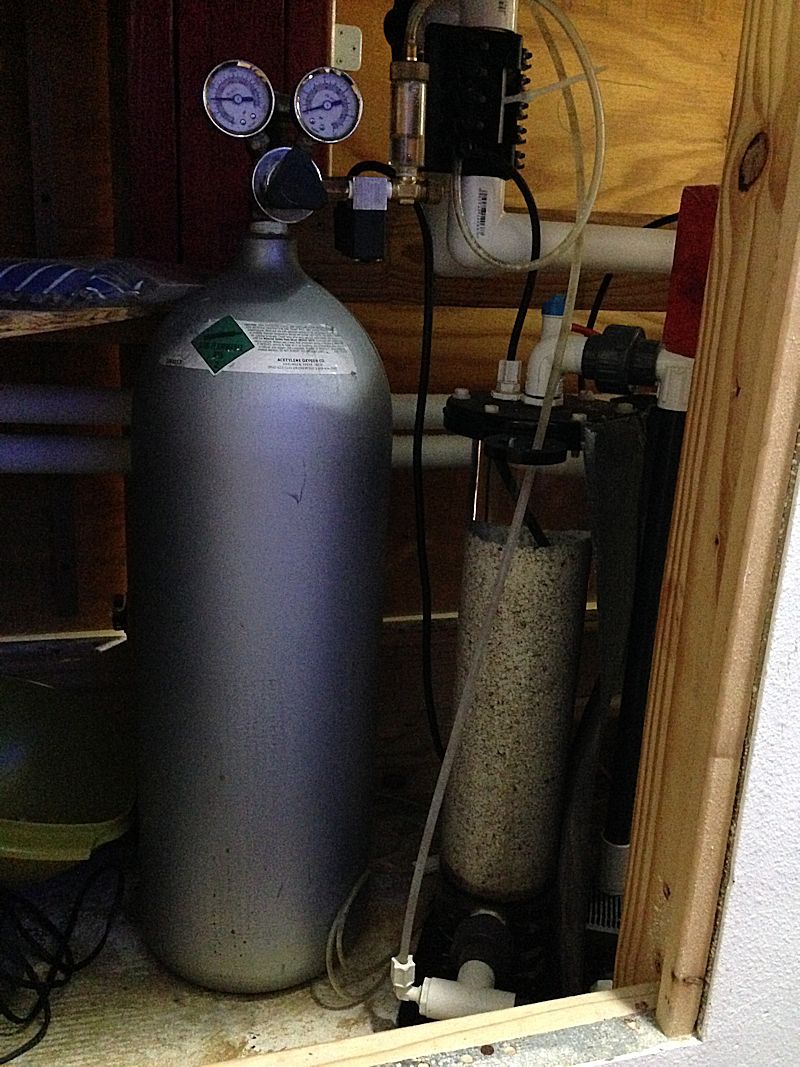
I also run Purigen and NP Reducing Bio Pellets. The Bio Pellets have been online for about 5 months now. I ran RowaPhos in it before.

I have ran carbon in this canister for years. I pack each tray in it. It is the GAC type carbon and pretty dusty, so I rinse it as wells as one can.
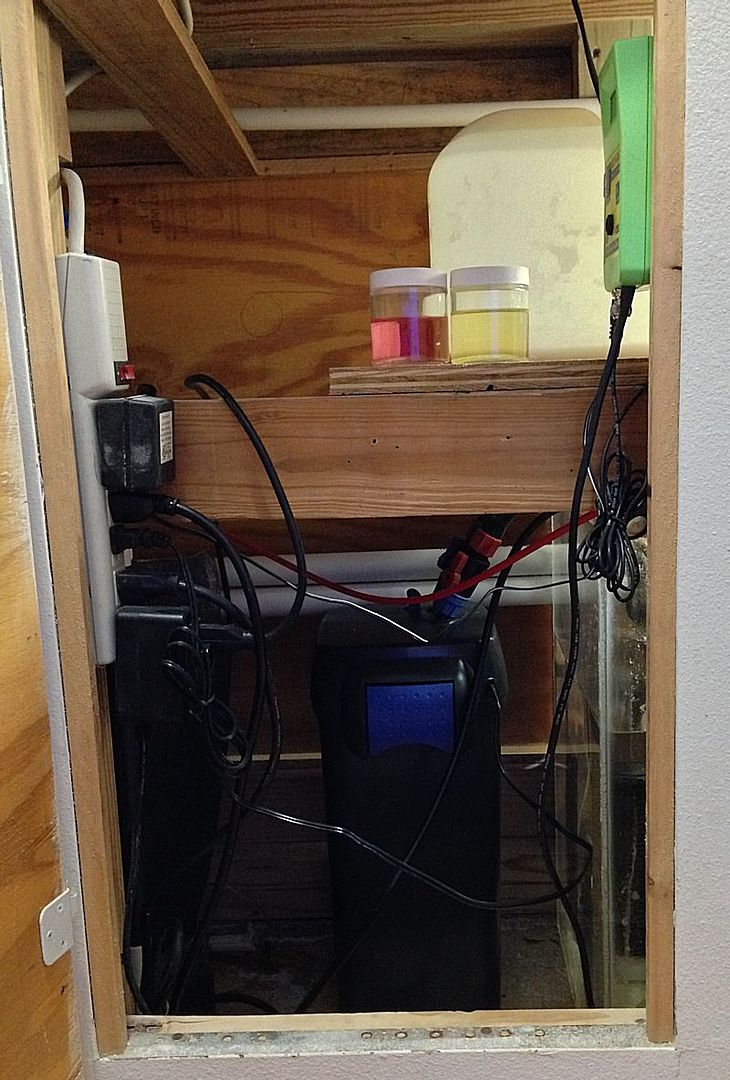
I use RO/DI water only in the system also.
This setup has been running for eight years, it crashed two years ago on me. But that was from neglect as we purchased a fishing boat and that took my attention away from the tank. I got complacent with it and paid the price.
So for the last two years I have been getting it back in shape slowly, getting real aggressive with it the last 6 months.
I had a 6" DSB in the Refugium, middle chamber, then packed full of rock and all the huge dead corals, plus a large Mangrove tree. I shut it down, emptied the middle chamber completely, going back with only enough rock to hold the tree up. Now I can vacuum the detritus buildup in it.
The 6" sand bed was very nasty after eight years. Most of it was black beneath the surface.
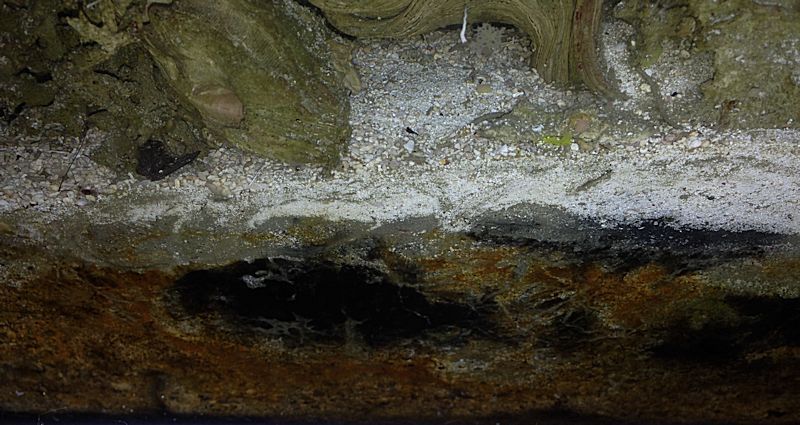
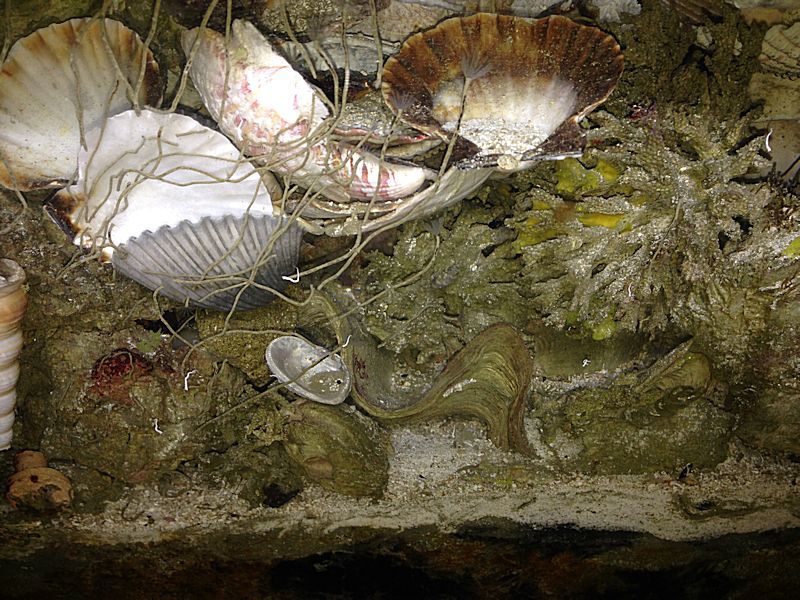
Here it is now and you can see the detritus buildup that I can vacuum out. The Mangrove Tree took a big hit that is a whole new story. lol! But it has bounced back and is about to get pruned again.
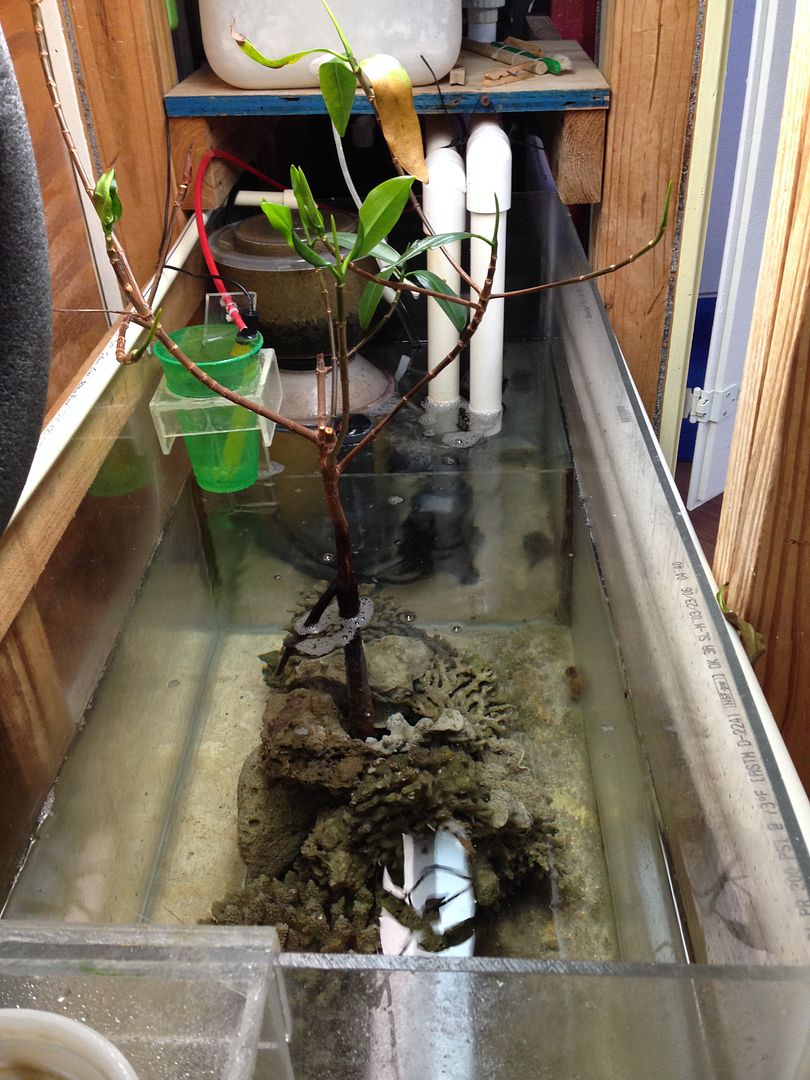
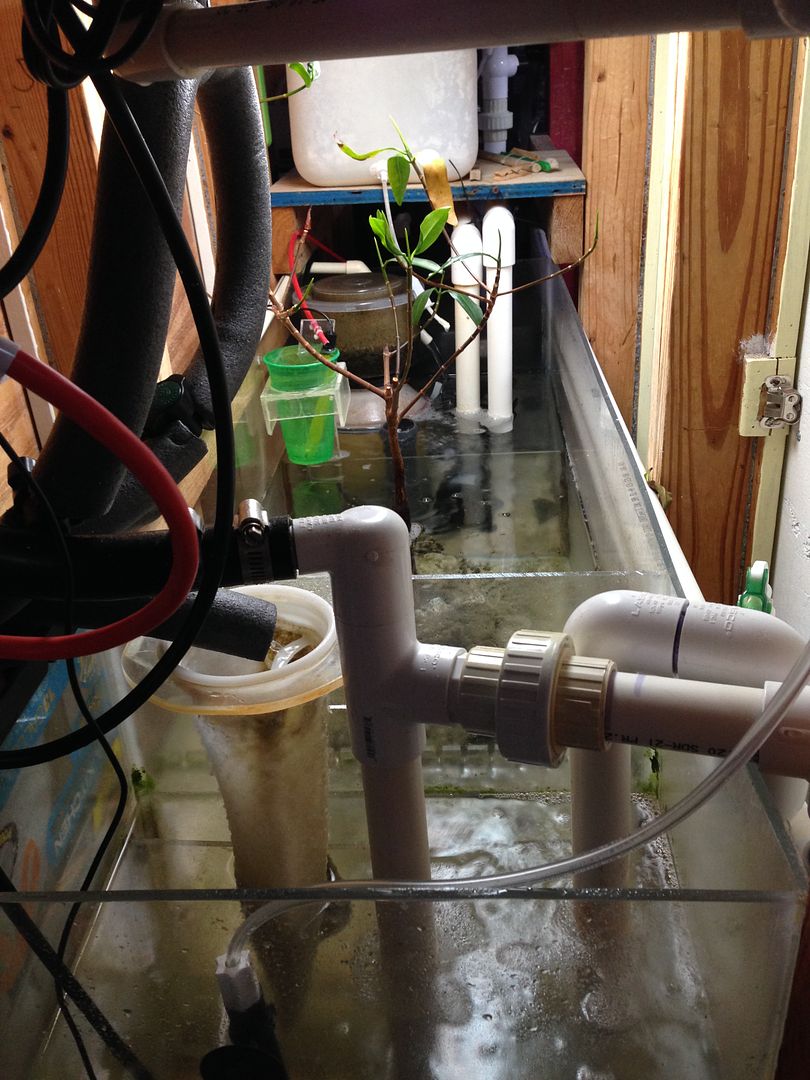
I also did the same thing with the 29g tank. I went back with minimum sand and rock work, turning it into a Zoa tank.
At one point, I had to remove all rock from the 125g tank to remove an algae that had taken over the rock. It was a short hair type and real tough, kinda like a wire wheel for a grinder.
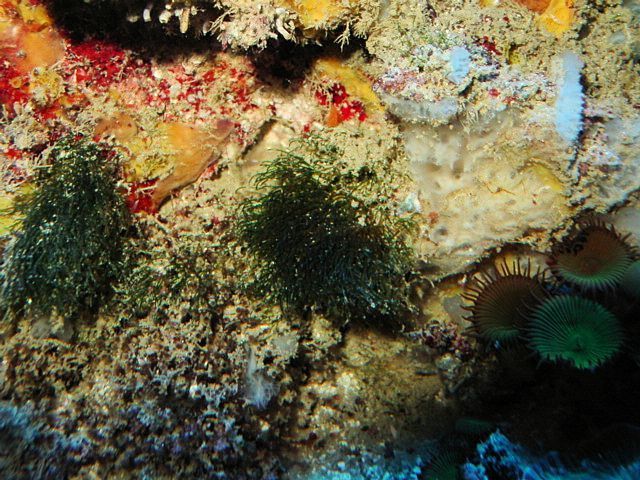
Then the last few days, I siphoned all the sand from the 125g tank. Back in 2006 when I set the tank up, I went with Southdown Sand, eventually removing some of it due to the snow storms it created. I laid Carib Sand on top of it to hold down the remaining Southdown.
I did half the tank the first day. Sifting the sand with a window screen, removing all Southdown, rinsing remaining sand, then returning it to the tank. I did the other half the next day. I also went back with minimum sand, about an inch or two deep.
This also gave me the opportunity to reset all my rock on the bottom of the tank glass, shoring it it where it needed it, then putting the sand around it. Gives me a more stable reef.
I did this over the weekend, so today I will do a 65g water change. Then test the water again.
The day before I did the 125g tank, all my water parameters were in check except Magnesium. It was at 650ppm and I have since been slowly raising it with Kent Tech M daily. I have also been dosing Sodium Ascorbate over the last 2 weeks. A teaspoon in the morning and another at night. mainly in hopes of clearing up the HLLE.
So now I am at the point that the system should be restored or clean again after everything I did to it since the crash.
Now that the carbon canister is offline, I will watch the two fish with HLLE real close to see if they clear up.
Now if I go back to carbon later on, I'm thinking of using one or two canisters we use on our RO/DI systems. Either use the Carbon Grabber filter at 0.5 microns or the Chloraguard Chloramine Carbon Block.
At $11.49 and $19.29, how cost effective does anyone think this would be?
Also, how long does anyone think a one or possibly a two filter setup would last?
I know on my top off water setup, the Carbon Grabber has been inline for almost a year and the TDS meter just read 213ppm in and 002ppm out.
Though the output reading is after the water has passed through the whole setup and not just the carbon canister.
Going with a canister or two would seem like a better alternative as the carbon in the Grabber filter would not have a chance to break loose and get ground up in a pump to become carbon fines.
The Carbon Block seems a better alternative since it is a solid block.
Long post, but I wanted to get all the history out there about the system. That way everyone knows what is involved with this ongoing issue.
Any input to this from anyone?
It came out in 2011. CLICK HERE
Though I have ran carbon since 2002 with tangs and never have seen HLLE until about a year ago when my Yellow Tang developed it. My FoxFace looks to have a mild case of it also. My Purple and Cole Tangs do not have it.
I get the carbon by the bucket load for free. They buy it in very large bulk bags. Only two would fit in the back of a pickup truck, that is how large they are. HumbleFish talks about cheap carbon and I'm sure this is cheap carbon.
Though carbon is carbon, right? It all comes from the same source basically? It is just prepared, so to speak, differently? Not really, as carbon is used for a wide variety of uses.
We use GAC (Granular Activated Carbon) in our systems as it is commonly used for water treatment.
Granular activated carbon has a relatively larger particle size compared to powdered activated carbon and consequently, presents a smaller external surface. Diffusion of the adsorbate is thus an important factor. These carbons are therefore preferred for all absorption of gases and vapors as their rate of diffusion are faster. Granulated carbons are used for water treatment, deodorization and separation of components of flow system and is also used in rapid mix basins. GAC can be either in granular or extruded form. GAC is designated by sizes such as 8×20, 20×40, or 8×30 for liquid phase applications and 4×6, 4×8 or 4×10 for vapor phase applications. A 20×40 carbon is made of particles that will pass through a U.S. Standard Mesh Size No. 20 sieve (0.84 mm) (generally specified as 85% passing) but be retained on a U.S. Standard Mesh Size No. 40 sieve (0.42 mm) (generally specified as 95% retained). AWWA (1992) B604 uses the 50-mesh sieve (0.297 mm) as the minimum GAC size. The most popular aqueous phase carbons are the 12×40 and 8×30 sizes because they have a good balance of size, surface area, and head loss characteristics.
There are however several different classifications of carbon for different uses.
Activated Carbon
The article from Coral talks about rinsing carbon real good before using it, if one still wants to run it. That would take a lot of RO/DI water to do, depending on the amount of carbon one runs.
If you use tap water to rinse it, I've always wondered how saturated it gets with this process. It is carbon after all, so as you rinse it, it is removing all the impurities from the tap water. So if you have to rinse it for a good amount of time to see clear water running through it, it will be saturated to a point afterwards.
Carbon adsorbs a wide range of impurities and contaminants, including chlorine, odors, and pigments. Other substances, like sodium, fluoride, and nitrates, are not as attracted to the carbon and are not filtered out. Because adsorption works by chemically binding the impurities to the carbon, the active sites in the charcoal eventually become filled. Activated charcoal filters become less effective with use and have to be recharged or replaced.
I thought it was a poor diet which caused the HLLE and have been feeding more algae sheets to them. Though the two do not seem to be getting better. The Yellow Tang does eat like a pig and seems in good health otherwise.



My system consists of a 125g main tank, 29g Zoa tank next to it, 45g Sump, and a 65g barrel in the garage and it is all plumbed into the Sump. So essentially it is one system.
65g barrel in garage with chiller. I do all water changes here by shutting it off from system, draining it with water hose, then refilling it with salt water mix from the 65g RO/DI barrel.

RO/DI barrel

I run a Calcium Reactor.

I also run Purigen and NP Reducing Bio Pellets. The Bio Pellets have been online for about 5 months now. I ran RowaPhos in it before.

I have ran carbon in this canister for years. I pack each tray in it. It is the GAC type carbon and pretty dusty, so I rinse it as wells as one can.

I use RO/DI water only in the system also.
This setup has been running for eight years, it crashed two years ago on me. But that was from neglect as we purchased a fishing boat and that took my attention away from the tank. I got complacent with it and paid the price.
So for the last two years I have been getting it back in shape slowly, getting real aggressive with it the last 6 months.
I had a 6" DSB in the Refugium, middle chamber, then packed full of rock and all the huge dead corals, plus a large Mangrove tree. I shut it down, emptied the middle chamber completely, going back with only enough rock to hold the tree up. Now I can vacuum the detritus buildup in it.
The 6" sand bed was very nasty after eight years. Most of it was black beneath the surface.


Here it is now and you can see the detritus buildup that I can vacuum out. The Mangrove Tree took a big hit that is a whole new story. lol! But it has bounced back and is about to get pruned again.


I also did the same thing with the 29g tank. I went back with minimum sand and rock work, turning it into a Zoa tank.
At one point, I had to remove all rock from the 125g tank to remove an algae that had taken over the rock. It was a short hair type and real tough, kinda like a wire wheel for a grinder.

Then the last few days, I siphoned all the sand from the 125g tank. Back in 2006 when I set the tank up, I went with Southdown Sand, eventually removing some of it due to the snow storms it created. I laid Carib Sand on top of it to hold down the remaining Southdown.
I did half the tank the first day. Sifting the sand with a window screen, removing all Southdown, rinsing remaining sand, then returning it to the tank. I did the other half the next day. I also went back with minimum sand, about an inch or two deep.
This also gave me the opportunity to reset all my rock on the bottom of the tank glass, shoring it it where it needed it, then putting the sand around it. Gives me a more stable reef.
I did this over the weekend, so today I will do a 65g water change. Then test the water again.
The day before I did the 125g tank, all my water parameters were in check except Magnesium. It was at 650ppm and I have since been slowly raising it with Kent Tech M daily. I have also been dosing Sodium Ascorbate over the last 2 weeks. A teaspoon in the morning and another at night. mainly in hopes of clearing up the HLLE.
So now I am at the point that the system should be restored or clean again after everything I did to it since the crash.
Now that the carbon canister is offline, I will watch the two fish with HLLE real close to see if they clear up.
Now if I go back to carbon later on, I'm thinking of using one or two canisters we use on our RO/DI systems. Either use the Carbon Grabber filter at 0.5 microns or the Chloraguard Chloramine Carbon Block.
At $11.49 and $19.29, how cost effective does anyone think this would be?
Also, how long does anyone think a one or possibly a two filter setup would last?
I know on my top off water setup, the Carbon Grabber has been inline for almost a year and the TDS meter just read 213ppm in and 002ppm out.
Though the output reading is after the water has passed through the whole setup and not just the carbon canister.
Going with a canister or two would seem like a better alternative as the carbon in the Grabber filter would not have a chance to break loose and get ground up in a pump to become carbon fines.
The Carbon Block seems a better alternative since it is a solid block.
Long post, but I wanted to get all the history out there about the system. That way everyone knows what is involved with this ongoing issue.
Any input to this from anyone?












